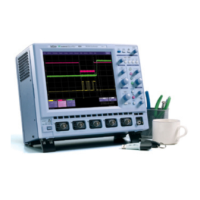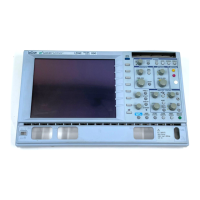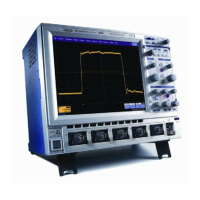X-Stream Operator’s Manual
WM-OM-E Rev I 419
rsnr Residual Signal-to-Noise Ratio
Definition Provides a residual signal-to-noise ratio for single-frequency, sector-based
waveforms.
Description Residual noise is the random noise present on a disk drive signal from read to
read.
By using single-frequency data, the algorithm is able to focus on the peaks,
zero-crossings, and the troughs. The ideal Viterbi input samples are therefore +1,
0, and -1. Deviations from the ideal are quantified and graphed. The squared
sigma of the total noise distribution is equal to the squared sigma of the media
noise distribution and the squared sigma of the residual noise distribution. This
relationship is always true:
σ
t
2
= σ
m
2
+ σ
r
2
For a large number of samples:
σ
m
2
= σ
a
2
σ
r
2
= σ
t
2
- σ
a
2
Once the distribution of the media noise has been calculated, the rsnr is then
calculated by:
rsnr = 20 log(v
0-p
/σ
r
)
Parameter
Settings
After specifying the location of the “Head Signal” and the optional “Read Gate,”
selection of rsnr is automatic after you touch the Noise Analysis button. Touch
the Setup for Single Frequency button to initialize the measurement.
m_to_r MSNR-to-RSNR Ratio
Definition Provides a media signal-to-noise residual to signal-to-noise ratio for
single-frequency, sector-based waveforms.
Description The m_to_r ratio provides a quick measurement to compare the media noise with
the residual noise. If this ratio is greater than 1.00, the signal is residual, or
electronics noise dominated.
The measurement is calculated by:
m_to_r = σ
m
/σ
r
Parameter
Settings
After specifying the location of the “Head Signal” and the optional “Read Gate,”
selection of m_to_r is automatic after you touch the Noise Analysis button. Touch
the Setup for Single Frequency button to initialize the measurement.

